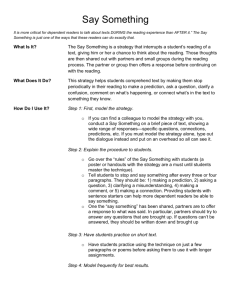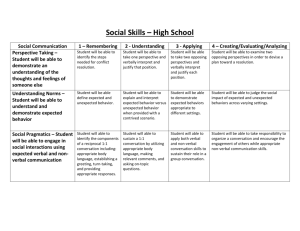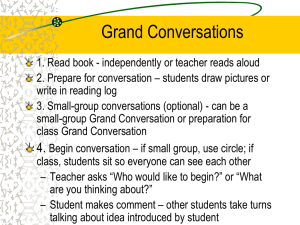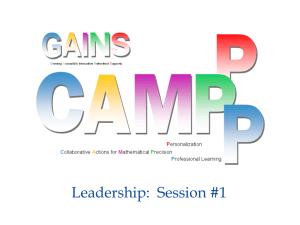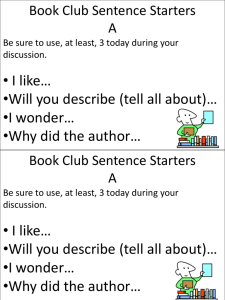Data - ndcel
advertisement
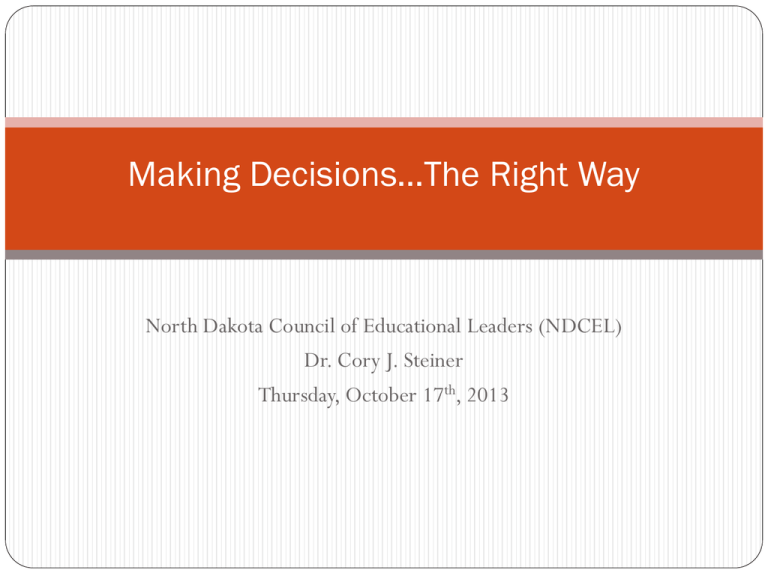
Making Decisions…The Right Way North Dakota Council of Educational Leaders (NDCEL) Dr. Cory J. Steiner Thursday, October 17th, 2013 Objectives Engage in collaboration with peers around key concepts and themes in education. Self-Reflection Guiding Principles Understand triggers and/or conversation starters as they relate to gathering, understanding, and analyzing key data. Understand how to utilize student data for purposeful planning. Identify yellow and red light students. Develop seating charts for at-risk students. Differentiate a lesson in 10 minutes. Understand the State Longitudinal Data System (SLDS) in terms of what it can do to help an organization continuously improve. Norms Listen Learn Share The SEED Project 19 schools participating Maddock, Underwood, Carrington, Fessenden-Bowdon, Watford City, Ray, Dunseith, Mohall, Kulm, Devils Lake, Grafton, Park River, Leeds, Billings County, South Heart, Mott-Regent, Richardton-Taylor, New Town, Northern Cass, Training districts on: Building data teams Utilizing the SLDS to make decisions Practical strategies for teachers to utilize data Best-practices from schools for students Collaborate across district lines Looking for our second phase of schools for the 2014-15 school year Must partner with another district in their region No charge to participating schools The ‘Data’ Movement Data is not new…the focus on data is new We have been using data to inform practice throughout educational history: Student discipline Grades Why the ‘Data’ Movement Can Fail Change is not coming…it is here…and it is continuous Failing to create short-term wins WIN (What’s Important Now) Purpose The focus must be on moving from good to great Get a little better every day It is about correction…and then…continuous improvement Stockdale Paradox ‘Retain faith that you will prevail in the end, regardless of the difficulties and at the same time confront the most brutal facts of your current reality whatever they might be’ Good to Great: Why Some Companies Make the Leap and Others Don't (Collins, 2001) Guiding Principles -What educators are saying… 1. Utilize common formative assessments 2. Value a careful and ethical approach to using and sharing data 3. Create a culture that values self-reflection 4. Never assign lazy as a diagnosis 5. Don’t rush to judgment 6. Collaboration time built into the existing schedule 7. Value quality data Access to the SLDS https://slds.ndcloud.gov Enter log and password (right side of screen) as K-12 user. To gain access, your Superintendent of Schools must e-mail EduTech to grant permission. E-mail me to facilitate this process. costeiner@nd.gov Strategy #1: Identifying Green, Yellow, and Red Light Students Student Directory Report Purpose: Displays student proficiency details selectable by school year, grade, school, proficiency level, and student demographics Student Directory: Triggers and/or Conversation Starters The report contains: Class schedule Grades Assessment scores Program information Attendance College and career readiness Transcripts The Student Dashboard Test Student ID# 16422222228 Twelfth Grade Student Information Academic Dashboard Transcript Test Student 111 South Park St Johns ND 58522 Home Phone 701-222-0225 School Information Central High School Demographics 701-322-4523 Date of Birth December 18, 1993 Grade Level 12 Age 18 School Year 2012 Gender Male Homeroom Olsen, Jennifer Race (W) White Late Enrollment No Date of Entry August 23, 2012 Date of Withdrawal Other Student Information At Risk Free Reduced Lunch Limited English Proficiency Disabilities Repeater (1 or more grades in last 3 years) Migrant Student infomration was last updated on October 23, 2012 Triggers and/or Conversation Starters Activity Triggers and/or Conversation Starters Class Schedule Grades Assessment Scores Triggers and/or Conversation Starters Activity Triggers and/or Conversation Starters Program Information Attendance College & Career Readiness Transcripts Strategy #2: At-Risk Seating Teacher Roster Report The Fundamental Five 1. 2. 3. 4. 5. Frame the lesson Teach in the power zone Praise and encouragement Critical writing Small group purposeful talk What is the Power Zone? Teach or monitor in close proximity to: One student Small group of students Entire classroom full of students Increases effectiveness of other teaching practices Classroom space is about learning and not about teaching Cain, S. & Laird, M. (2011). The Fundamental Five: The Formula for Quality Instruction Why the Power Zone? Improve Teaching and Maximize Student Learning Monitor understanding Answer questions Differentiate as needed Immediate feedback Cain, S. & Laird, M. (2011). The Fundamental Five: The Formula for Quality Instruction Why the Power Zone (continued)? Classroom Management Increase proximity Address problem behavior immediately Manage transitions Two Minute Problem Why the Power Zone (continued)? Build Relationships Build rapport faster Communicate with all students Show genuine interest in students Personal connection with student Cain, S. & Laird, M. (2011). The Fundamental Five: The Formula for Quality Instruction Strategy #3: Differentiation…in 10 Minutes or Less Power Zone Activity Draw what a classroom set up might look like when it is design Things to Consider: Can you get anywhere at any time without interrupting teaching and learning? Get ‘there’ without verbal interaction Stand next to any student (front, side, and behind) Engage in non-teaching tasks without interrupting student learning Northwest Evaluation Association (NWEA) NWEA Measures of Academic Progress (MAP) tests present students with engaging, age-appropriate content. As a student responds to questions, the test responds to the student, adjusting up or down in difficulty. What Does a Number Mean? Look at the data for end of year mean (right side of each individual table) What does a 223 RIT mean (in terms of grade level) for reading, math, & language usage? Reading—10th grade Math—5th/6th grade Language Usage—11th grade Activity: Breaking Down the Numbers Divide the student list into three equal parts based on RIT score (achievement) Categorize (color code the categories) Top group—Above (blue) Middle Group—At (yellow) Below Group—Below (pink) Activity: Designing the Lesson Objective: Students will read through chapter five and complete a summary sheet detailing key concepts from the reading. Should assignments be the same for all students? Is having the same assignment fair and/or equal? What do students in each category know? Need to know? Activity: Designing the Lesson Objective: Students will read through chapter five and complete a summary sheet detailing key concepts from the reading. Above—Read Chapter Five and complete the ‘summary’ sheet. Summary sheet simply identifies: Number of key concepts Accompanying pages Required number of details for each concept Activity: Designing the Lesson Objective: Students will read through chapter five and complete a summary sheet detailing key concepts from the reading. At—Read Chapter Five and complete the ‘summary’ sheet. Summary sheet specifically identifies: Five of the key concepts Accompanying pages Required number of details for each concept o One exemplar provided Activity: Designing the Lesson Objective: Students will read through chapter five and complete a summary sheet detailing key concepts from the reading. Below—Read Chapter Five and complete the ‘summary’ sheet. Summary sheet specifically identifies: All key concepts Specific pages (linked to each concept) Required number of details for each concept o Multiple exemplars provided A sentence starter for each concept Final Thoughts Have a genuine appreciation for the effort and commitment that everyone makes because together, we shall succeed. Casey Bradley, Jacksonville Jaguars Head Coach Questions?? Dr. Cory J Steiner E-mail: costeiner@nd.gov Twitter: @nddatasteward Blog: http://blogs.edutech.nodak.edu/corysteiner/ Phone: 701-893-5087


